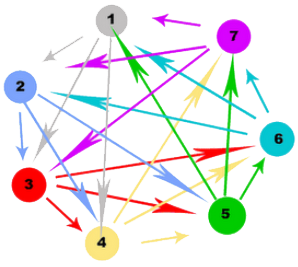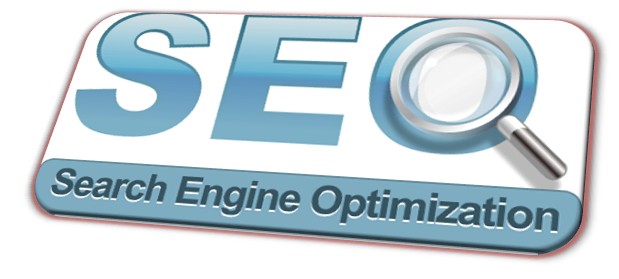How to create your own online store in 2020
-
Leonid Vlasov
Copywriter Elbuz
The easiest way to make money online is to sell goods, but at the initial stage you will have to work hard on creating a website. Today, a lot of resources and software are offered for these purposes, so even someone who has never dealt with Internet commerce before will cope with the task. The following step-by-step instructions will help you speed up and simplify this process.
Step 1 - Choose a name for your online store
In order for the store to become popular and start to make a profit, it is necessary to name it correctly, because the frequency of visiting the resource and the ease of finding it depend on the name. The name is an element of the image, so it should be memorable and attractive.
Incorrect naming can lead to a reduction in the flow of potential customers, and hence to loss of profit.
First, you need to decide on the purpose of the name. It can be intriguing, mysterious, attractive, etc. The selected options should be tested among potential customers or your friends, asking them what associations it causes.
In the absence of ideas, it makes sense to turn to naming specialists. They come up with names based on the features and history of the business, test them and offer the client the most suitable options. Today, the market is oversaturated with similar trading platforms selling household appliances, clothes or cosmetics, so you need to stand out from the competition by coming up with an original name that will be unique, memorable and quite simple.
The ideal name should attract new customers to the site and form a positive image of the company.
There are a number of characteristics inherent in a good store name:
- ease of reading;
- simplicity;
- uniqueness;
- memorability;
- showiness;
- the absence of complex letter combinations and special characters in the text.
Step 2 - Buy a domain name and host it on a good host
When figuring out how to create your own online store, it is impossible not to touch on the topic of choosing a domain.
The ideal option is when the name in the search line duplicates the name of the business, since standard or complex domain names reduce the likelihood of organic traffic coming to the resource.
A domain is the name that users remember and enter in the search bar, so it is important that it be unique and memorable, otherwise there is a risk that a potential client will go to competitors. The characteristics of a good domain are almost the same as the name:
- completely duplicates the name of the business;
- as short as possible;
- easy to read and write;
- does not become more complicated in the process of transliteration (translation into Latin or English);
- contains a minimum of numbers and special characters.
The brevity of the domain is especially important, because modern people are constantly in a hurry and instead of entering a long name, most likely they will go to competitors. It should be so simple and short that even a child can easily enter it in the search box on a computer or smartphone.
After choosing a domain, you need to take care of hosting - a place on the network for your site. Options with free hosting should be dismissed immediately, as they have too many disadvantages:
- an abundance of advertising and turning it off only for an additional fee;
- linking the network name of the store to the provider's domain, which reduces the trust in the resource;
- unstable work and slow loading of the site due to constant congestion;
- insufficient level of information security, including personal data of customers;
- lack of prompt technical support and compensation for losses in force majeure situations.
Hostings are of different types and differ from each other in server resources and access level:
- Cloud hosting. The real physical service is divided into many small accounts that are leased to site owners for temporary use. In this case, it will not be possible to change the global server settings, however, everyone will be able to manage such a host thanks to a convenient graphical control panel issued by the owner. This option is the most affordable and ideal for small trading floors. In the process of business development, the package can be expanded to the required volume for an additional fee.
- Virtual dedicated server. Suitable for stores with a large assortment of products and high daily attendance. At its core, it is a budget option for a full-fledged dedicated server, because the user can not only host a site on the hosting, but also change the software configuration for himself, having the necessary knowledge and skills, or entrust this issue to a freelancer who will install a graphical control panel to manage the server.
- Dedicated server. A physical server for rent provides that the tenant will carry out all hosting management independently. Given the rather high cost of this option, it is worth choosing it exclusively for large trading platforms that are constantly expanding.
When choosing a hosting, you should analyze:
- the cost of services and tariff plans from several providers;
- technical parameters of the offered packages;
- Availability of technical support and backup options;
- list of services included in the service;
- the presence of a trial period with a minimum payment or the possibility of a refund;
- presence of restrictions.
Software from ElbuzGroup offers its customers cloud hosting, using which you can expand and scale your business to any size, up to a large marketplace with a million commodity items.
Step 3 - Choose a design for your store
The appearance of the site is extremely important. The design should be not only attractive in appearance, but also user-friendly, inspire confidence and desire to make a purchase.
When creating an online store, a business owner has two options:
- choose a ready-made design template for your CMS;
- order an individual layout for layout from a professional designer.
The latter option is much more expensive and it does not always make sense to choose it, especially since modern ready-made templates can be adapted to your needs.
When choosing a template, there are a number of factors to consider:
- Adaptability. Most often, clients use mobile devices to surf the web - phones or tablets, so the resource must be adapted for them, otherwise the conversion will be minimal. Choosing a theme compatible with such devices greatly expands the attractiveness of the resource, because orders can be made not only from home, but in any convenient place, almost on the go.
- Convenience. All interface details should contribute to comfortable interaction with them, from the search and navigation system to the interactive shopping cart. In many templates with a beautiful design, usability suffers, and this factor is much more important, because the easier it is to find and select a product, the more likely it is that a user who accidentally visits the resource will make a purchase.
- SEO. The chosen theme should provide maximum opportunities for SEO-optimization of the site for search engines. To do this, the creators provide their templates with built-in functionality and offer plugins to further expand its capabilities.
- Personalization. In most cases, the owner wants to change some parameters for himself, even in an ideal design at first glance. This can be a color scheme that needs to be adjusted to fit the corporate identity, graphic elements, or the display of content blocks. It’s great if the theme has a built-in control panel, using which you can customize the template to your needs without changing the code and special technical difficulties.
- Availability of technical support. The inability to contact the theme developers can make the use of the template impossible, so the presence of such a service can be considered mandatory. Otherwise, in the absence of technical skills, you will have to solve all the problems that arise with the involvement of third-party specialists, each time paying for their services.
- Compatibility. It is imperative that the theme is displayed and works equally on most popular browsers, providing a positive user experience.
- Multilingual. The need to display a site in several languages at once exists not only for businesses operating in the global market, but also for local resources, especially in countries where two or three languages are used at the same time. If this parameter is missing in the template, it will have to be further developed.
- Visual. Poor design can lead to high failure rates. In the case of online commerce, the site is both a showcase and a business card. It should testify to the reliability and professionalism of the business.
The program for automating the work of online stores from ElbuzGroup has 10 built-in templates at once, which can be easily adapted to your business within a few hours. It is enough to choose the most suitable one and you can start filling the site with goods.
Step 4 - Choose a CMS and CRM to manage your store
The choice of an engine or CMS for a store is one of the most significant and difficult issues. There are both paid and free options, each with its own advantages and disadvantages.
The main requirements for choosing CMS and CRM are ease of management, a high level of security and stability.
All existing CMS can be divided into 4 large groups:
- free open source;
- commercial, or, as they are often called "boxed";
- exclusive - written by private studios to order;
- self-written.
It is necessary to choose a good engine from the very beginning, because when sales become stable and the business starts to grow, a weak CMS will not cope with the increased needs.
When choosing a CMS, it is recommended to pay attention to the following:
- Available design templates. As mentioned above, the appearance of the site is very important, as well as the adaptability of themes for its design, offered by the selected CMS.
- Catalog management. The platform should provide the simplest and fastest way to add products with the ability to configure the necessary attributes, such as displaying promotional offers or additional characteristics. It is also worth paying attention to the possibility of displaying products in a list and the possibility of sorting them with various filters, since users often use this functionality.
- Opportunities for optimization. Not all CMS have built-in functions for adapting the site to the requirements of search engines, but without them, the owner will lose potential traffic, and hence profit.
- Available methods of delivery and payment. The client should have a choice regarding the terms of delivery and payment, and the CMS should provide for the possibility of adding several methods at once. For example, in large cities, payment on the site by card and courier delivery are more in demand, while in separate regions it is easier to use forwarding by postal services and cash on delivery.
- Availability of service and cost of service. In the absence of its own support system, any problems with the CMS will have to be solved by the owner, paying separately for this service. Many developers offer this service for a fee, but in the end it can cost even more than the CMS itself.
The E Trade Jumper program from Elbaz has a built-in CMS and CRM thanks to which you can easily manage an online store and automate most of the routine processes. The flexibility and convenience of these tools, as well as the possibility of renting software, make the program truly unique and the best offer on the market.
Step 5 - Upload products from suppliers to the site
After all the technical and preparatory work, the moment comes to fill the resource with content. It is information that is the most important element of the site for customers, so the more detailed the descriptions and characteristics of the products and the better the photos and videos of the product, the more likely the user will make a purchase from you.
Launching a resource with the presence of products without detailed information about it, photos, videos and other elements will be ineffective. It can be compared with the opening of a stationary store, but without a sign and advertising, so filling the site with content is a very important stage, which should not be missed in any case.
It is ideal when texts for the store are written by professional copywriters, using keywords for promotion, maintaining an optimal spam rate and minimal text content, and photos and videos are made to order by a photographer and cameraman. However, for a store with 1000 or more products, such filling will be too costly.
In order to save money, you can first fill in the sections with product categories with information, and then fill the cards with the most popular positions with content.
There are several ways to fill the catalog with content:
- Independent. Filling out the cards is entrusted to the seller, and if the store is small and the budget is limited, they do it on their own. The method is expedient with a small number of goods, since one person can fill no more than 100 products in a working day, and even 50 with high quality.
- Professional. Content manager services can be ordered on outsourcing. At the same time, if the specialist searches for information himself, makes selections of advantages and main characteristics and creates an ideal selling description for each product, the final cost of filling will be quite high, and the risk of errors associated with the human factor is not excluded.
- Parsing. A convenient way to fill the site, especially in cases where you need to add a large number of products. Such software can be developed for a specific store or CRM and does not require large financial and time costs. In this case, the program collects information from the source specified by the user and transfers it to your site.
The software from ElbuzGroup is equipped with a built-in parser and will fill the site no worse than an experienced content manager, and it will do it without errors and very quickly. Supplier price lists, content databases, and even direct competitor websites can serve as a source of information for product cards. A significant advantage of the software is the fact that it is synchronized with all CRMs, and automatic processing of price lists helps to control the availability of products and price changes. Using the parser, you can add to the site not only descriptions and characteristics of goods, but also photos, adjusting the collected information to fit your needs in just a couple of clicks. In this way, you can unload from 2000 products per day.
Step 6 - Set up your online store and connect technical support
A ready-made site with installed CRM filled with content must be properly configured. The presence of additional services in the software used will help simplify business and minimize the number of hired employees.
Full automation of the online store offered by ElbuzGroup, provides for:
- Adding products to the site and regularly updating prices if they are changed by the supplier.
- Convenient work with reporting and other documents - commodity balances, availability, turnover and other points will always be under control, and you can draw up invoices, contracts and templates for CP directly from the system.
- Segmentation of the customer base - dividing customers into categories allows you to make mailings with personalized offers for the CAM.
- Work with orders - when a request is received from a client, the request is automatically redirected to the supplier, which allows you to quickly process a large number of orders.
- Control of work by the manager - in case of errors, they can be quickly tracked and corrected.
- Integration with delivery services - will allow you to quickly send orders to customers.
- Full-fledged analytics - these systems allow you to analyze traffic sources, customer preferences and build the most effective sales funnels.
By setting up the system just once, you don’t have to worry about manually updating prices or adding products, all orders will be under control, and reporting and analytics can be done with a couple of clicks.
In addition to setting up the store already at the launch stage, you should also take care of organizing a support service, because if it does not exist, in case of problems, the likelihood of negative feedback from customers will increase, which will spoil the image of your business.
It is not necessary to hire a separate employee in the helpdesk, because third-party cloud services, including Elbuz, can also provide technical support.
A high-quality technical support system involves:
- minimum redirects between consultants and departments;
- prompt responses to inquiries;
- multilingual service;
- well-coordinated work even in conditions of heavy workload (for example, during promotions).
Step 7 - Make a profit and develop the site without being distracted by trifles
Thinking about how to create a profitable online store and not just another resource with product cards, you should understand that marketing is indispensable.
To promote and promote the store, you will need full-fledged SEO optimization. At the initial stage, you will need to use analyzers to monitor search engines and identify key queries. Further, all the content of the resource will need to be optimized for such requests, and then uploaded to the site again.
There are three ways to effectively optimize a site, among which there are only two legal ones:
- Official methods - promotion in this case will take a lot of time and will be very costly from a financial point of view, but it is guaranteed to raise the rating of the store and definitely will not lead to the imposition of filters and penalties on the site. When using “white hat” promotion methods, you can use the tools of Elbuz products that will effectively complement SEO optimization, and monitoring the prices of online stores will help you make profitable offers to your potential customers.
- Gray methods - in this case, optimizers promote the site through advertising activity on external resources and social networks. At the same time, you should be as careful as possible so that the promotion does not have the opposite effect and is not perceived as spam. Products from ElbuzGroup in this case will also come in handy, because they will allow you to work with the resource in a complex way, and not solve each emerging issue separately.
There is no point in discussing the third method, which involves fraudulent actions, since it will definitely not lead to good results. Automation of routine processes, including filling the site and processing supplier price lists, will help the owner devote time to more significant things and develop his business.
Automatic processing of price lists
- Step 1 - Choose a name for your online store
- Step 2 - Buy a domain name and host it on a good host
- Step 3 - Choose a design for your store
- Step 4 - Choose a CMS and CRM to manage your store
- Step 5 - Upload products from suppliers to the site
- Step 6 - Set up your online store and connect technical support
- Step 7 - Make a profit and develop the site without being distracted by trifles
Save a link to this article
Leonid Vlasov
Copywriter ElbuzMy texts are a kaleidoscope of successful automation in the Internet space. Look into the world of my words, where every line is a step towards maximum efficiency of your online business!
Discussion of the topic – How to create your own online store in 2020
How to create your own online store in 2020
There are no reviews for this product.
























Write a comment
Your email address will not be published. Required fields are checked *